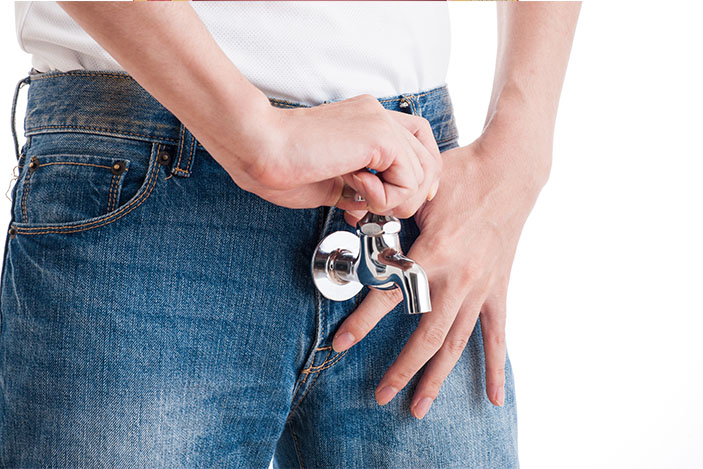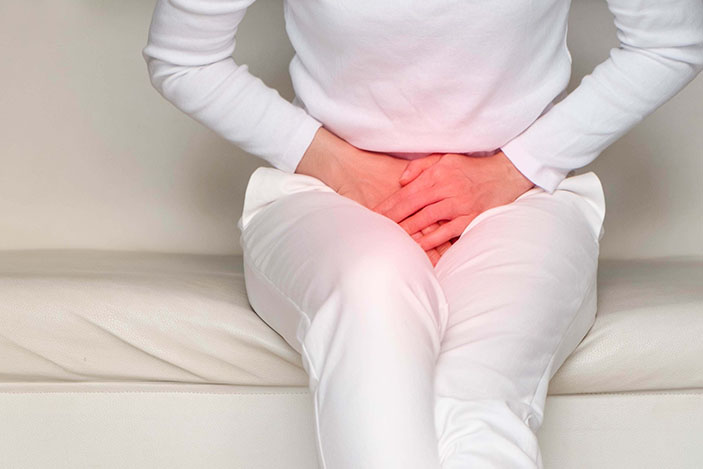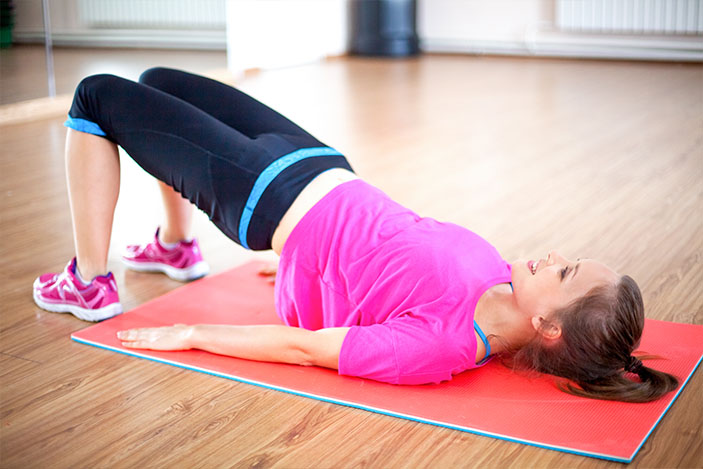
URINARY incontinence is the inability to control the bladder or prevent urine from leaking.
This common and embarrassing problem is treatable.
“You need not feel disheartened or suffer in silence,” consoles Vernetta Wong, a musculoskeletal physiotherapist and lymphoedema therapist from Physio Advance, a member of Healthway Medical Group.
“Urinary incontinence is a common problem and there is a range of treatment options. Your doctor and physiotherapist can develop a suitable treatment plan based on your diagnosis. Seeking early treatment can help you to lead a more active and fulfilling life,” she adds.
 Often, urinary incontinence results from the weakening of the pelvic floor muscle.
Often, urinary incontinence results from the weakening of the pelvic floor muscle.
The pelvic floor muscle is shaped like a hammock at the bottom of our pelvic bones. Its functions include:
- Supporting organs such as the bladder, bowel, rectum, and uterus (women);
- Supporting core muscle systems and;
- Contracting and relaxing the muscle that allows for the passing of urine and bowel.
Article Follows…
What Weakens The Pelvic Floor Muscle?
In Women
Commonly, the pelvic floor muscle is stretched and weakened during pregnancy by the weight of the baby. This affects the tone of the urethral sphincter muscle controlling the retention and release of urine from the bladder. Multiple pregnancies can further weaken this muscle.
In Men
Patients with prostate cancer or benign prostatic hyperplasia (a non-cancerous enlargement of the prostate) may undergo surgery to remove the gland. The surgery may subject them to the risk of damage in the genital nerve or urethra, which in turn can weaken this muscle.
Other Causes of Urinary Incontinence
Prolapse of the pelvic organs: A condition whereby the bladder, uterus or rectum drops into the vagina.
Spinal nerve or cord injury: Due to injury or degeneration in the spine.
Benign prostatic hyperplasia: Enlarged prostate which compresses on the urethral sphincter will limit the bladder’s ability to empty completely. As a result, the bladder fills up faster causing the frequent or urgent need to urinate.
Suffering a stroke.
You Might Also Like To Read:
Understanding And Beating Diabetes
The Good And Bad Of Cholesterol
Types of Urinary Incontinence
- Stress urinary incontinence
- Urge urinary incontinence (Overactive bladder)
- Mixed urinary incontinence (A combination of 1 & 2)
Article Follows…
- Stress Urinary incontinence
Stress urinary incontinence is the most common type of incontinence. Urine leakage can be triggered by:
- Coughing
- Sneezing
- Heavy lifting
- Bearing down due to constipation
Basically, stress urinary incontinence occurs when there is physical exertion that increases the intra-abdominal pressure and stresses the pelvic floor muscles.
How can Stress Urinary Incontinence be Treated?
A digital examination via the rectum or vagina can be used to assess the strength of the pelvic floor muscle. There are non-surgical and surgical treatment options for this condition.
Non-Surgical Treatments for Stress Urinary Incontinence

Pelvic Floor Muscle Training or Kegel Exercise
It is carried out by a Physiotherapist as the first line of treatment. Electrical stimulation and biofeedback are often used while doing Kegel exercise to enhance the effectiveness of this strengthening exercise.
Pessary
A pessary is a removable device that is inserted into the vagina to support the pelvic organs. This is effective for mild prolapse which eases the pressure on the pelvic floor muscle.
Fibre-intake
Constipation may aggravate urinary incontinence. Eating more high-fibre food and drinking lots of fluids will help to soften the stools.
Lifestyle
Regular exercise helps to improve a person’s mobility and fitness, especially for the elderly. This may enable them to reach the toilet before wetting themselves. Moving around regularly will also help with bowel movement and reduce constipation.
Urosheath
The urosheath is a latex or silicone tubing placed over the penis to help facilitate the drainage of urine. It is not a treatment to improve urinary incontinence but an alternative to an incontinence pad.
Surgical Treatments for Stress Urinary Incontinence
Tension Free Vaginal Tape
A minimally invasive surgery that is performed by a urologist to provide support to the bladder neck in women. It may be considered when all non-surgical options have failed.
Male Sling
A surgery that helps to relocate the urethra, maintains appropriate tension over the urethra to avoid recurrent leakages and urine retention.
Artificial Urinary Sphincter
It is an implant that is surgically placed around the urethra to treat more severe cases of male stress urinary incontinence. It compresses on the urethra and restricts the flow of urine out of the bladder
The Healthy Way is a regular health series developed for STORM.SG by Healthway Medical. If you have specific queries, please do email us at health@storm.sg and we will ask the panel of experts for their advice. Do note that only selected queries will be addressed.
Urge Urinary Incontinence (Overactive Bladder)
This occurs when the bladder contracts involuntarily, causing urine to leak through the urethral sphincter which holds the bladder closed. It may be caused by infection, neurologic disorder or diabetes.
Signs and symptoms:
- Uncontrollable urge to urinate;
- Frequent urination;
- Nocturia: more than 2 toilet visits every night.
The urge can be triggered by the sound of water dripping or flowing or when seeing the toilet.
Treatment
It is usually diagnosed with a urodynamic test to check how well the bladder and urethral sphincter store and release urine. It can be treated in the following ways:
- Pelvic floor muscle training (Please refer to treatment for Stress Urinary Incontinence);
- Bladder training to delay urination upon feeling the urge. The duration is gradually stretched to reach urination every 2 to 4 hours;
- Abstaining from caffeinated food and drinks such as coffee, tea, carbonated drinks and chocolate which can increase the urge and frequency of urination;
- Medication such as Vesicare and Enablex can help to reduce the urge to urinate by relaxing the bladder muscles.
Other Effects of Urinary Incontinence
Generally, patients will need absorbent pads and adult diapers to avoid urine accidents, skin irritation and to block odour.
Urinary incontinence can affect daily activities and may pose some physical, social and emotional challenges on the sufferers. Other consequences include the likelihood of one slipping into depression, isolation and low self-esteem.
But for most patients, simple lifestyle change or medical treatment can stop the discomfort or embarrassment.
 Vernetta Wong is a musculoskeletal physiotherapist and lymphoedema therapist from Physio Advance, a member of Healthway Medical Group. She has 13 years of clinical experience as a registered physiotherapist with 10 years of specialisation in musculoskeletal conditions. Her other subspecialty includes pelvic floor re-training in patients with urinary incontinence arising from post pregnancy in women and post robotic-assisted laparoscopic radical prostatectomy (RALRP), a surgery to remove the prostate in men with prostate cancer.
Vernetta Wong is a musculoskeletal physiotherapist and lymphoedema therapist from Physio Advance, a member of Healthway Medical Group. She has 13 years of clinical experience as a registered physiotherapist with 10 years of specialisation in musculoskeletal conditions. Her other subspecialty includes pelvic floor re-training in patients with urinary incontinence arising from post pregnancy in women and post robotic-assisted laparoscopic radical prostatectomy (RALRP), a surgery to remove the prostate in men with prostate cancer.
Images: Shutterstock

























